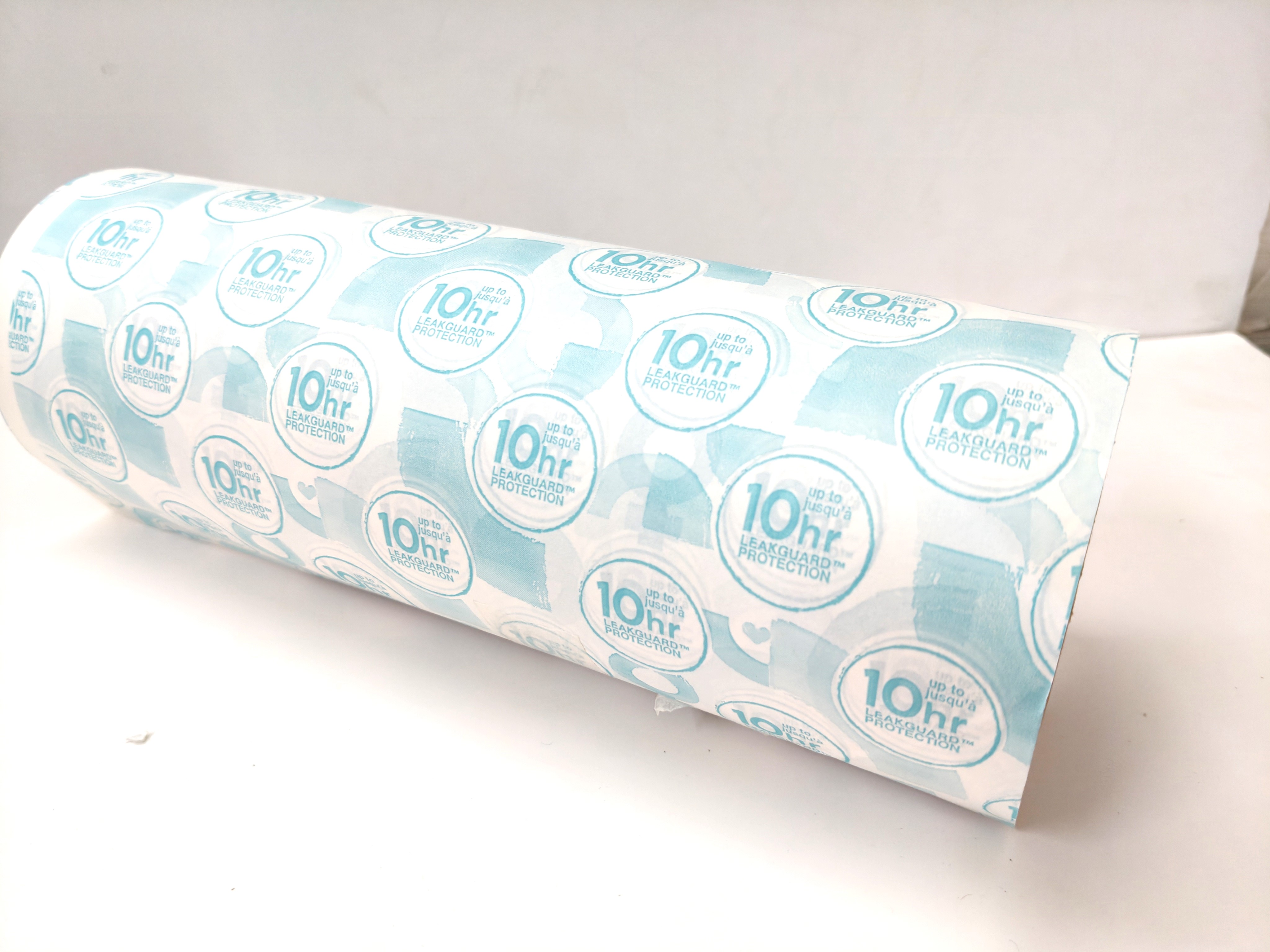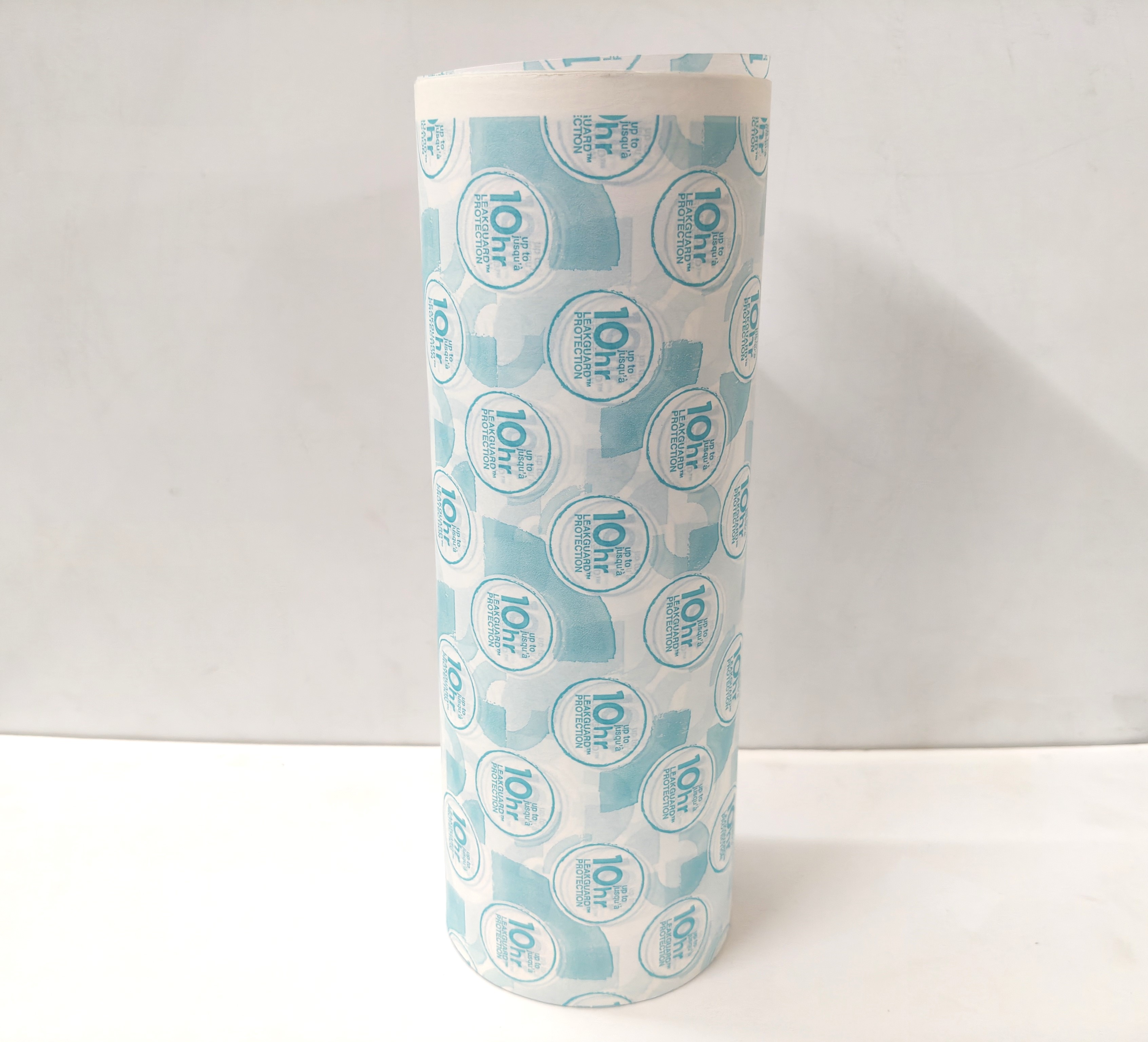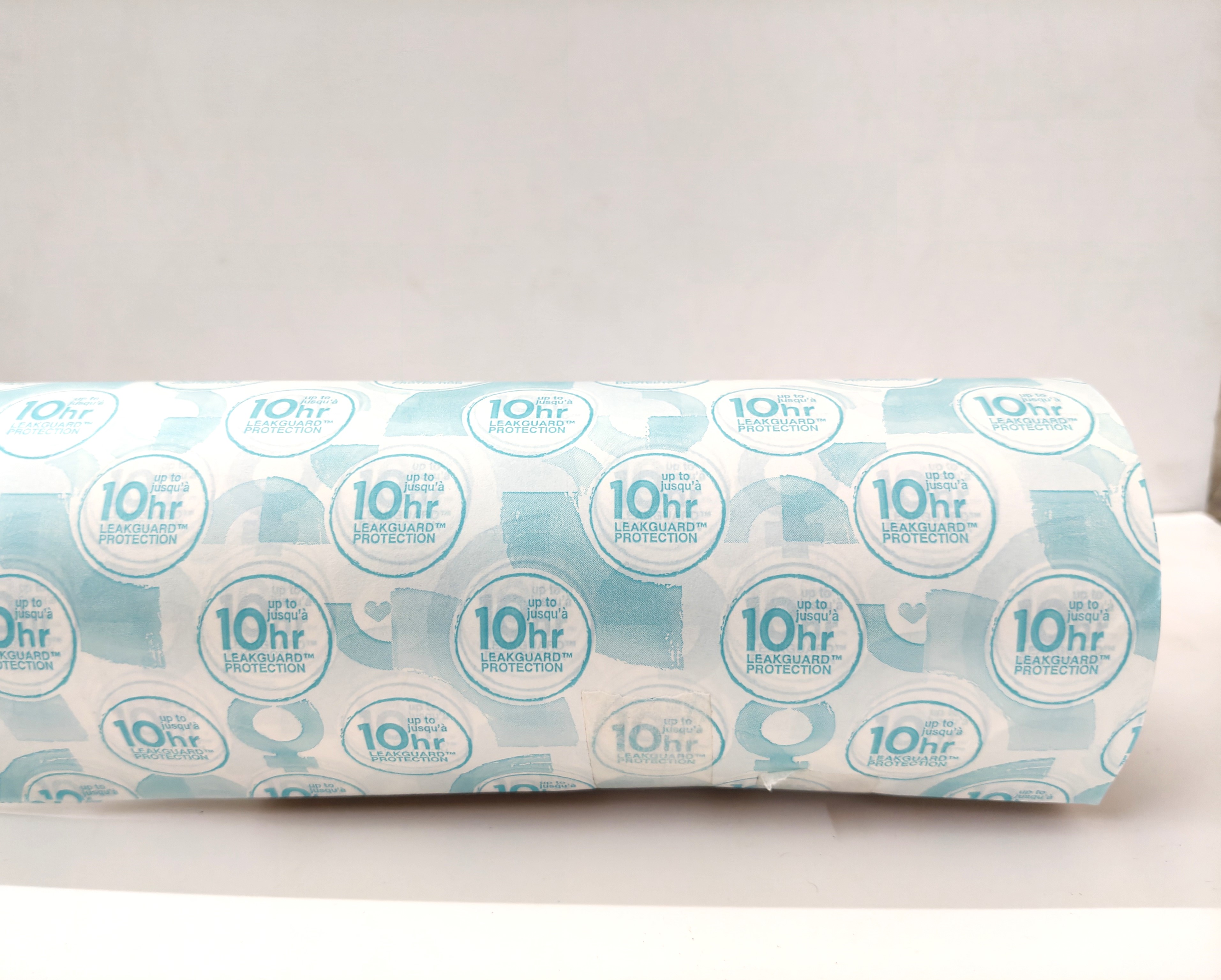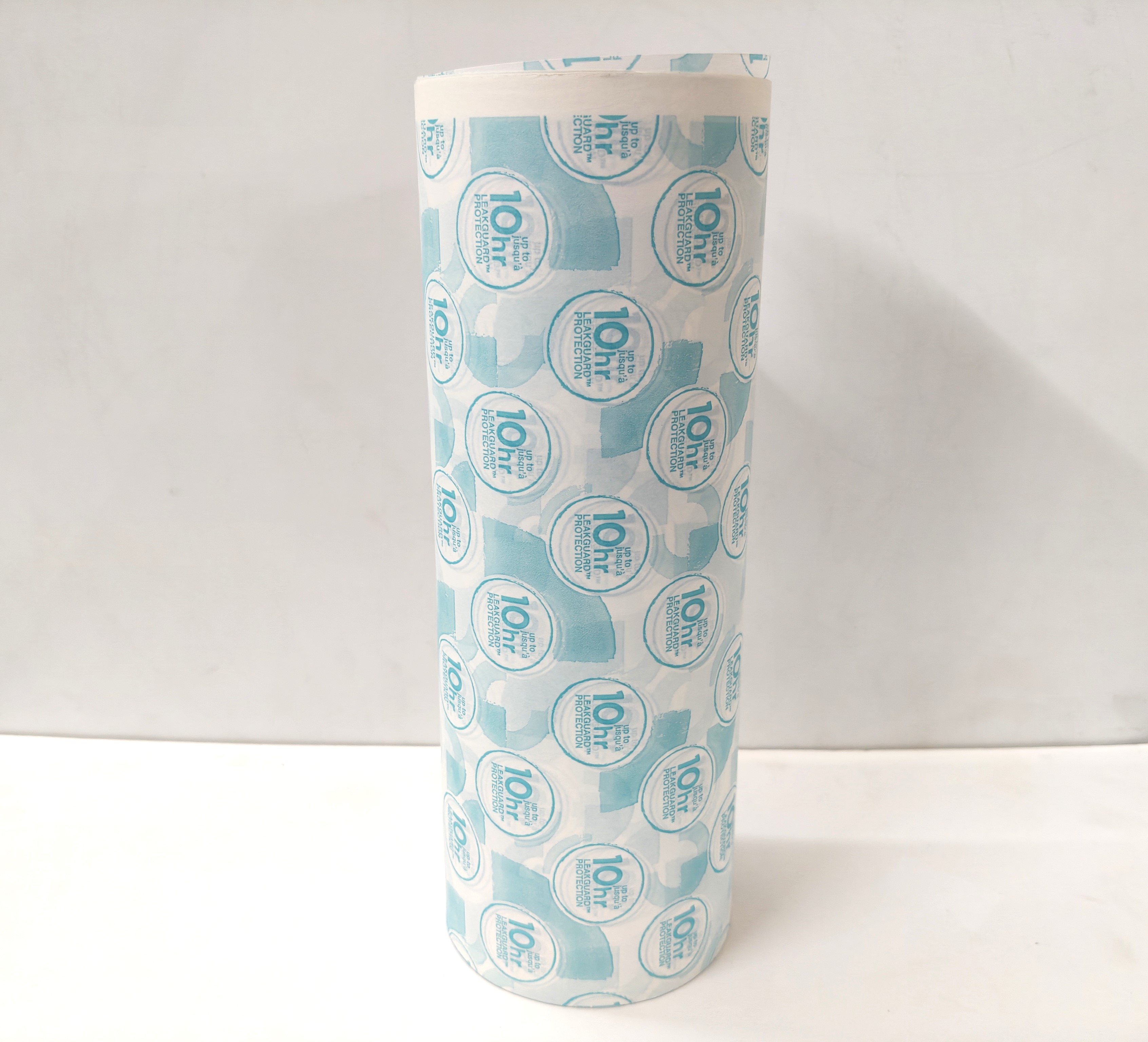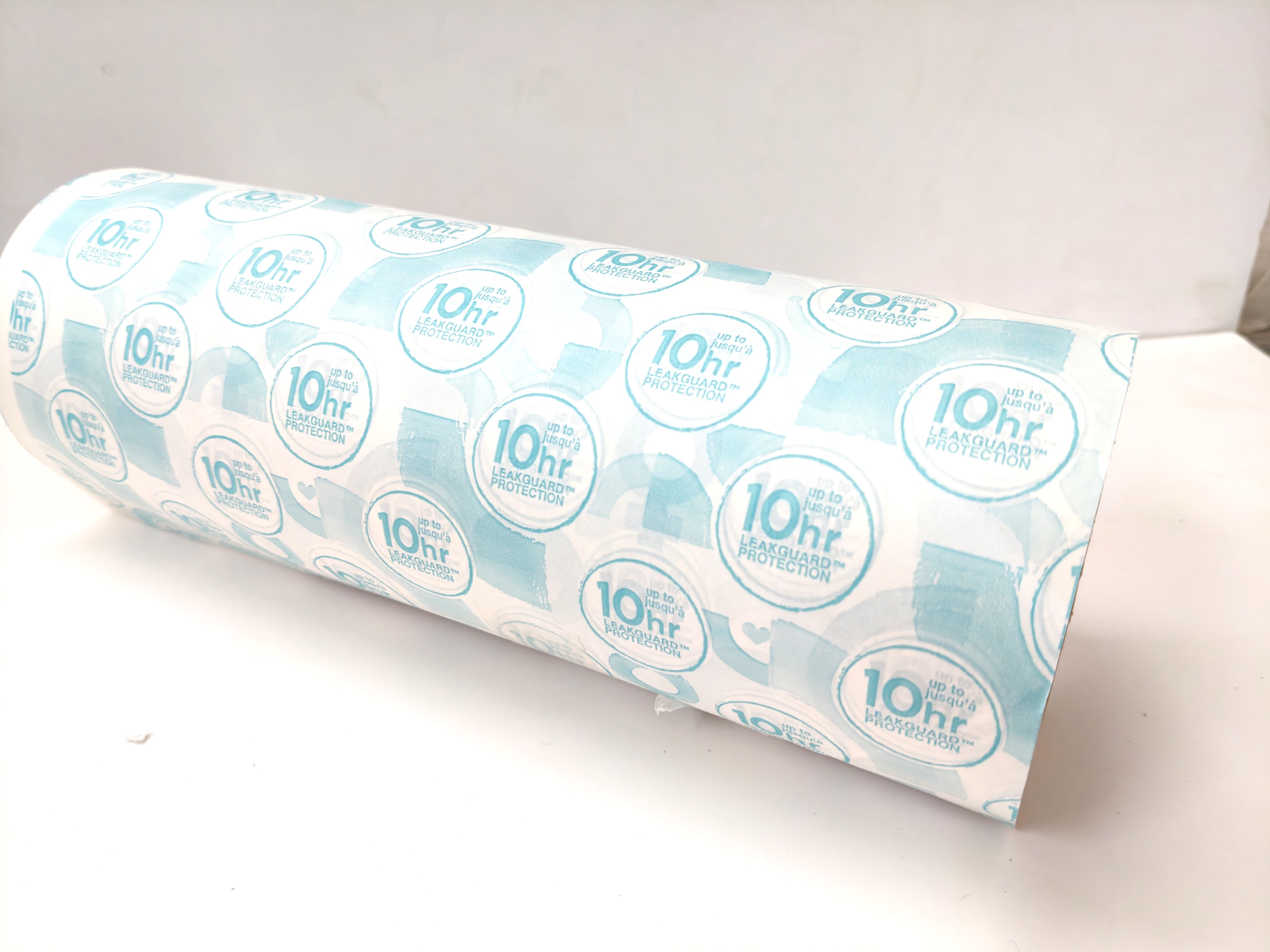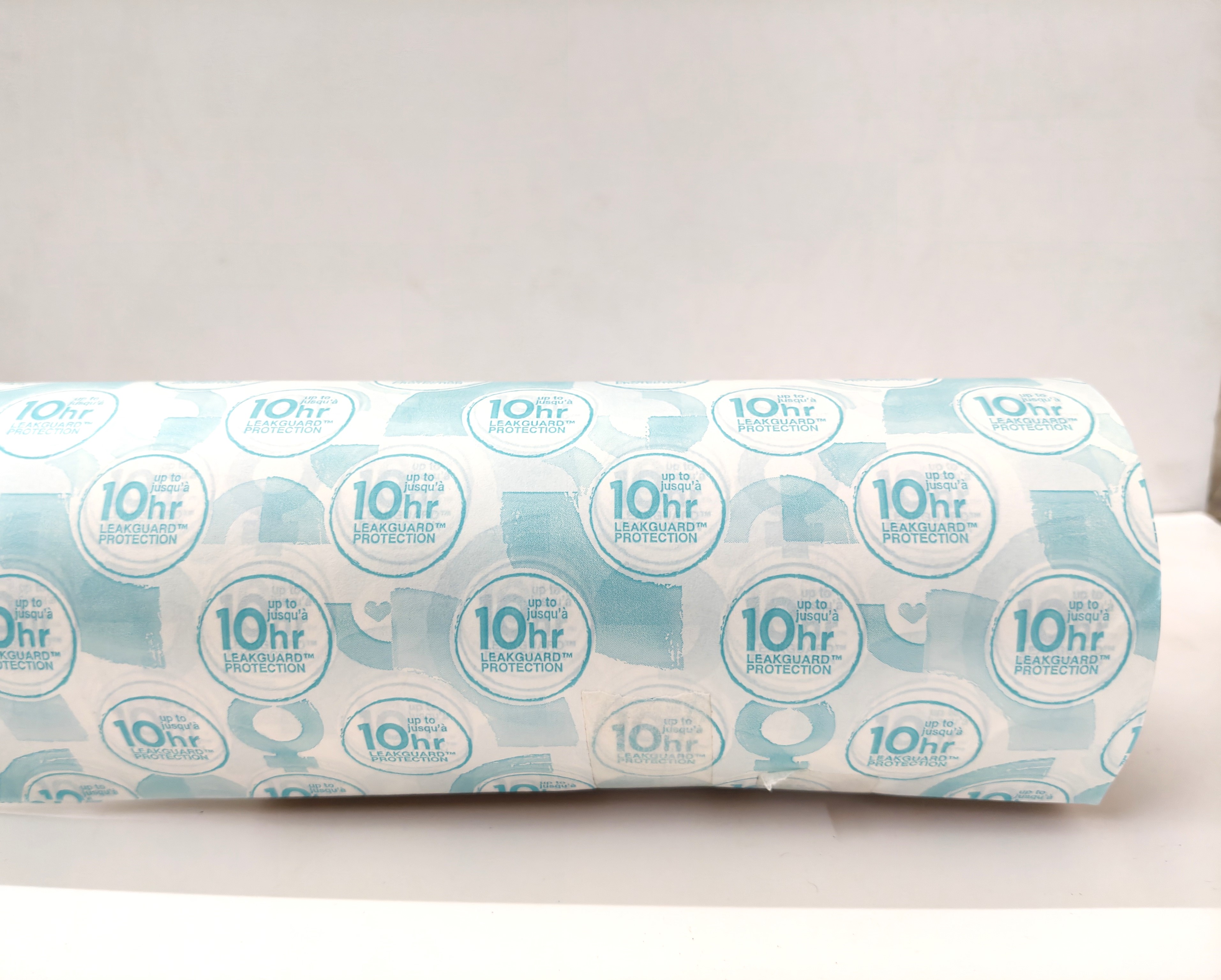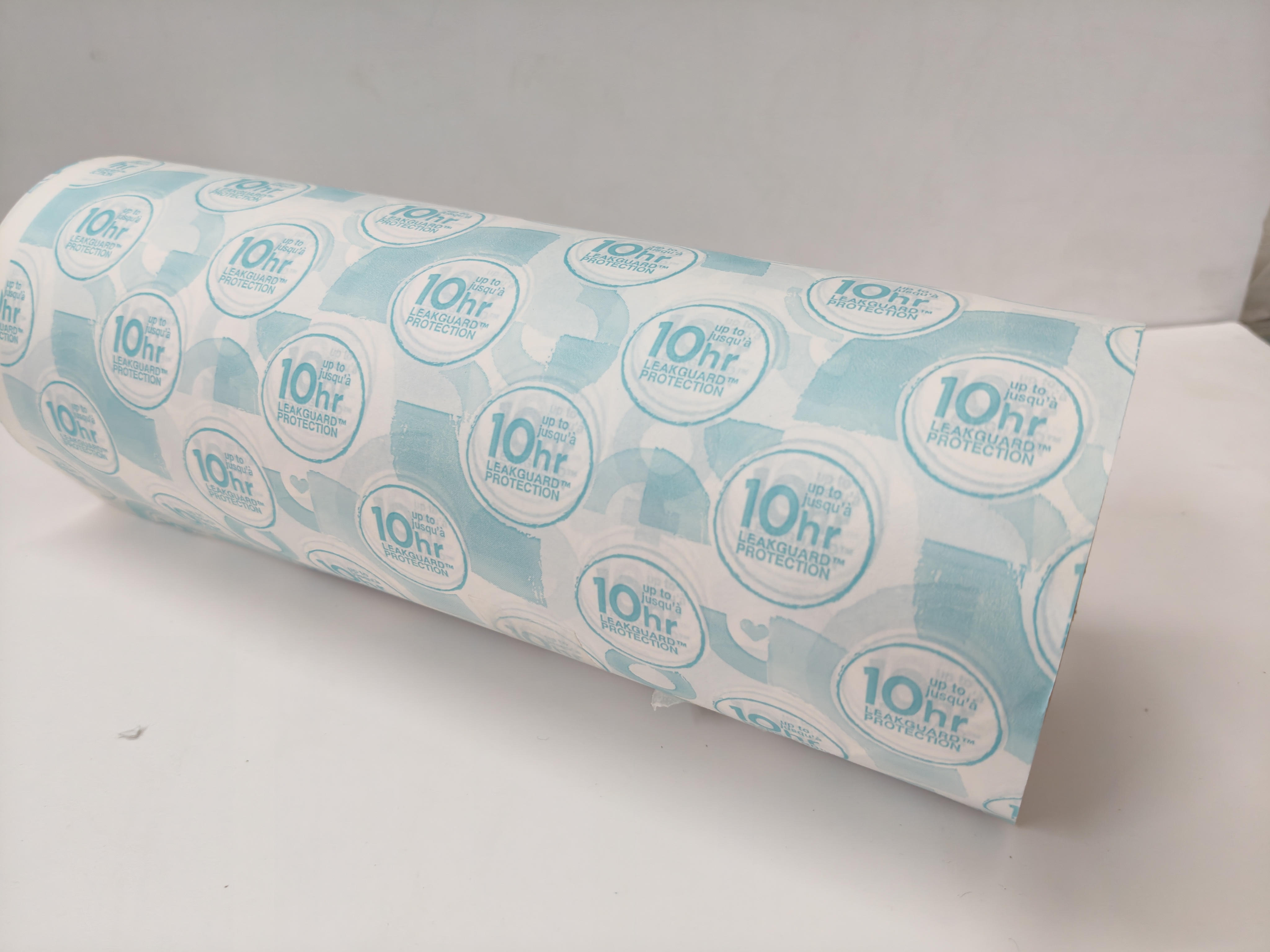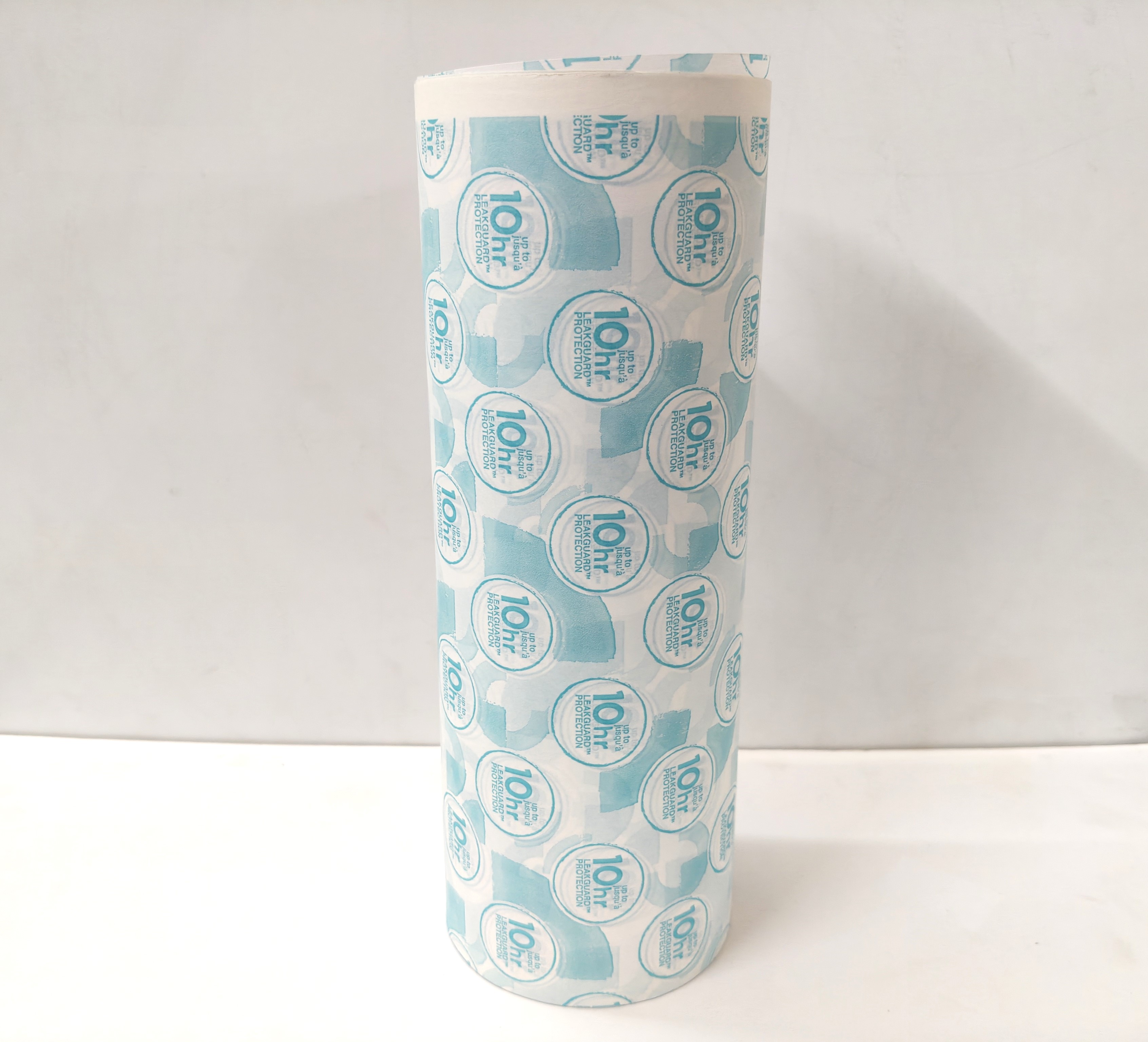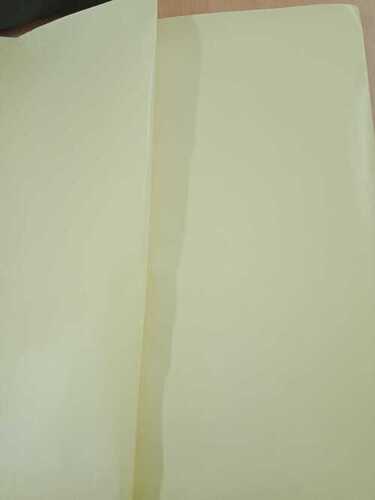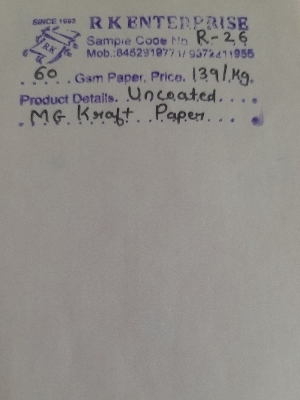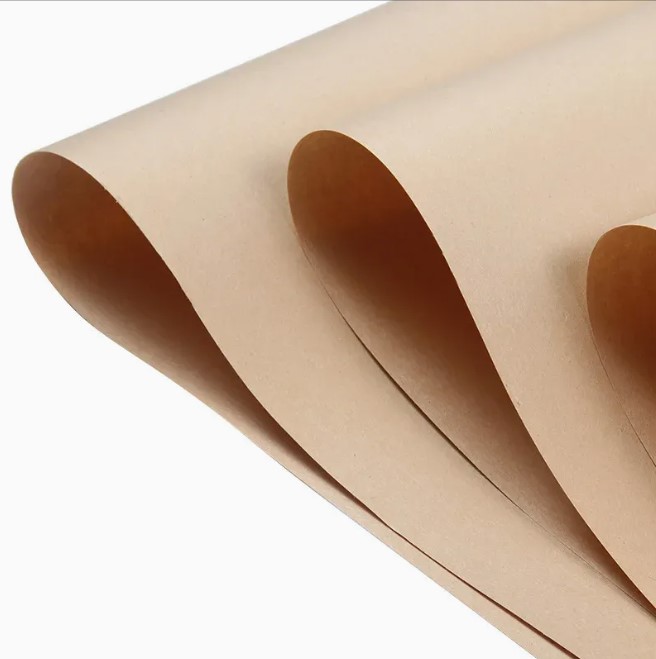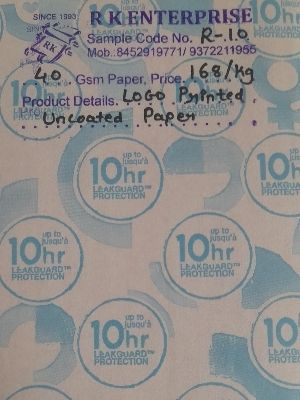Logo Continue Printed Uncoated Paper
Product Details:
- Pulp Material Straw Pulp
- Pulp Type Chemical Mechanical Pulp
- Size Standard
- Weight GSM (gm/2)
- Color White
- Feature Moisture Proof
- Compatible Printing Other
- Click to View more
Logo Continue Printed Uncoated Paper Price And Quantity
- 168.00 INR/Bundle
- 200 Kilograms
Logo Continue Printed Uncoated Paper Product Specifications
- Moisture Proof
- Other
- Standard
- Rectangle
- Other
- Yes
- White
- Chemical Mechanical Pulp
- Straw Pulp
- GSM (gm/2)
Logo Continue Printed Uncoated Paper Trade Information
- 2000 Kilograms Per Day
- 5 Days
- Packing is available on sheets & rolls formats as per customer preference, packing goods packed by paper packing, taped, goni, cartoon, PVC rapper finally dispatched.
- ' l l ' All India
- Logo Printed on Uncoated Paper is a great choice for creating a natural, organic look for your brand while offering a high-quality printing surface. Uncoated paper has a matte finish, which gives it a soft, natural texture and allows for a more subtle and refined appearance of logos and text. It is a popular choice for brands aiming to communicate authenticity, sustainability, and sophistication, as it provides a tactile, eco-friendly feel.
Product Description
Logo Printed on Uncoated Paper is a great choice for creating a natural, organic look for your brand while offering a high-quality printing surface. Uncoated paper has a matte finish, which gives it a soft, natural texture and allows for a more subtle and refined appearance of logos and text. It is a popular choice for brands aiming to communicate authenticity, sustainability, and sophistication, as it provides a tactile, eco-friendly feel.
Heres a breakdown of how logo printing on uncoated paper works, its benefits, design considerations, and best practices:
1. Understanding Uncoated Paper for Logo Printing:
- Texture: Uncoated paper has a natural, textured surface that can vary from slightly rough to smooth. This texture is noticeable to the touch and creates a more organic look compared to glossy or coated papers.
- Ink Absorption: The uncoated surface absorbs ink rather than letting it sit on top, resulting in softer, more subdued colors. This makes it perfect for designs that aim for a more vintage or subtle appearance.
- Matte Finish: The lack of coating means that the paper wont reflect light as much, providing a more muted, understated appearance. This works well for brands that want a more minimalistic or classic style.
2. Benefits of Printing a Logo on Uncoated Paper:
- Natural Look: The uncoated surface gives the printed logo a soft, organic appearance. This look is often associated with high-end, eco-friendly, or artisanal brands.
- Enhanced Tactile Experience: The texture of uncoated paper gives the printed logo a more tactile feel, which adds to the premium or sustainable image of the brand. Consumers can feel the difference, which adds to the overall impression of quality.
- Eco-Friendly: Uncoated papers are often more environmentally friendly than coated papers because they use fewer chemicals in production. Many uncoated papers are also recyclable, making them a great option for brands that prioritize sustainability.
- Versatility: Uncoated paper can work for various types of branding, from luxury and minimalist designs to more casual and environmentally conscious ones.
- Subtle, Elegant Design: Because the ink is absorbed by the paper, the printed logo tends to have a more muted and refined look. This is perfect for creating a logo that blends into the design naturally without overwhelming it with too much gloss or shine.
3. Design Considerations for Logo Printing on Uncoated Paper:
- Logo Colors: Because uncoated paper absorbs ink, bold, saturated colors may appear slightly more subdued. To achieve the best effect, use colors that complement the matte look and avoid overly bright or neon tones, which might appear washed out.
- For a more vibrant logo, consider using darker shades, earth tones, or metallic inks that can still pop but wont clash with the papers natural appearance.
- Font Choice: The texture of uncoated paper can affect how small text and fine details appear. Ensure that the font is bold enough to maintain legibility. Serif or sans-serif fonts with thicker strokes typically perform better than very fine or intricate fonts.
- Consider bold or clear typography that stands out well on the matte surface.
- Logo Size and Simplicity: Uncoated paper is perfect for simpler logos that dont rely on high-gloss or intricate detailing. If your logo has too many fine lines or small elements, they might not reproduce well on uncoated paper. Opt for logos that use solid shapes or clear lines for the best results.
- Contrast: Since the surface is matte, there may be less contrast between text and background than on coated paper. Ensure your design has enough contrast to remain legible and stand out. Dark logos on a light background tend to work well, but be mindful of color choices.
4. Best Practices for Printing Logos on Uncoated Paper:
- Choose the Right Paper Weight: Depending on your project, consider choosing the right weight for your uncoated paper. Thicker papers tend to give a more premium feel, while lighter options are ideal for applications like flyers or brochures.
- Printing Method:
- Offset Printing: This is one of the best methods for printing on uncoated paper. It allows for high-quality prints and is great for large runs. Offset printing ensures the best color accuracy and sharpness, even on uncoated surfaces.
- Digital Printing: If you need shorter print runs, digital printing is an excellent option. Its cost-effective for smaller quantities and provides decent results on uncoated papers.
- Letterpress or Engraving: For a luxury touch, letterpress or engraving can create tactile impressions in the paper, enhancing the tactile experience of the logo.
- Ink Type: Choose inks that are designed to absorb well on uncoated paper. Water-based inks are typically ideal for this purpose. Make sure to test the inks for consistency and accuracy before proceeding with a full print run.
- Bleed and Margins: Ensure your logo has sufficient space from the edge of the paper (margins) to prevent cutting off any part of the design. Additionally, use a bleed if the logo or design goes to the edge of the paper.
- Finish: While uncoated paper is naturally matte, you could add a light varnish or spot UV coating to certain areas of the logo (e.g., the brand name) to give it subtle gloss highlights without fully coating the paper.
5. Common Applications for Logo Printing on Uncoated Paper:
- Business Cards: Uncoated paper is a popular choice for business cards. The matte finish gives a professional, sophisticated look and feels unique to the touch. Its especially popular in industries that emphasize sustainability and eco-friendliness.
- Packaging: For luxury or eco-conscious brands, uncoated paper is often used for packaging materials like boxes, labels, and bags. The natural texture complements the brands message of authenticity and quality.
- Stationery: Uncoated paper is often used for letterheads, envelopes, and notepads. The tactile experience of uncoated paper makes it ideal for formal communications and premium stationery.
- Brochures and Flyers: If you want a natural, earthy look for your brochures or marketing materials, uncoated paper can provide that. The softer print tones and feel make it suitable for more upscale, understated marketing campaigns.
- Product Tags and Labels: Uncoated paper is often used for product tags, especially for artisanal, handmade, or sustainable goods. It enhances the tactile experience for the consumer and reinforces the brands story.
6. Environmental Benefits of Using Uncoated Paper:
- Sustainability: Many uncoated papers are made from recycled materials or sourced from responsibly managed forests, making them an eco-friendly choice for brands focused on sustainability.
- Recyclability: Uncoated paper is often easier to recycle than coated papers, which typically use chemicals that can hinder the recycling process. This makes uncoated paper a great choice for environmentally-conscious businesses.
7. Example Use Case:
Imagine a premium coffee brand using a minimalist logo printed on uncoated paper for its packaging:
- The logo would be printed in deep brown or gold ink, making it stand out subtly against the natural, earthy texture of the uncoated paper.
- The uncoated texture gives the packaging a premium, artisanal feel, appealing to customers who value both sustainability and quality.
- The logo, with its clean lines and bold typography, would remain easily legible and impactful even on the more porous surface of uncoated paper.

Price:
- 50
- 100
- 200
- 250
- 500
- 1000+
Other Products in 'Silicon Coated Paper' category
 |
G K ENTERPRISE
All Rights Reserved.(Terms of Use) Developed and Managed by Infocom Network Private Limited. |

 Send Inquiry
Send Inquiry
